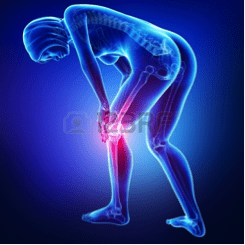What is “Runner’s Knee”? aka Patellofemoral Pain Syndrome
An all too common knee injury of the most frustrating kind is Patellofemoral Pain Syndrome (PFPS) or “Runner’s Knee.” Other names that have been interchanged are “movie-goer’s knee” and chondromalacia of the knee. The pain is often described as dull and achy, and is generally located on the inside or outside of the patella (“knee cap”). It can also be very sharp and may even cause the knee to “buckle” or give way, especially when running or going down stairs.
Common Symptoms:
- “Dull achy” pain on the inside or outside of the knee cap (Can be sharp pain acutely)
- Gradual onset/increase in pain of an unknown cause
- Pain with:
- Running
- Descending stairs
- Sitting for extended periods of time
This condition is typically an overuse problem (not from a specific fall or twist) that arises secondary to malalignment between the patella and the groove of the femur (the “thigh bone”). There may be external factors that lead to this diagnosis, however it is most frequently due to biomechanical changes that occur over time from relative tightness and weakness in the surrounding soft tissue of the hip, knee, and even the foot.
In a “normal” knee, the patella tracks in a shallow groove of the femur when the knee flexes and extends (bends and straightens). If the patella is “off track” and is grinding along the femur instead of gliding in the groove, over time, it can cause discomfort or pain. The patella has the greatest point of contact with the femur during 45-90 degrees of knee flexion, which explains why people who have PFPS can experience symptoms when sitting (a non weight bearing position) as well as when squatting (weight bearing).

Source: Johns Hopkins Department of Orthopedic Surgery
PFPS can be evaluated with a thorough biomechanical examination of the entire lower extremity by a qualified Physical Therapist. Analysis of both static postures and dynamic movements, combined with specific manual muscle tests are used to identify potential structural and functional imbalances. A personalized treatment plan is then composed and carried out through manual interventions and graded therapeutic exercises that are specifically tailored to the needs of each individual.


Leave a Reply
Want to join the discussion?Feel free to contribute!